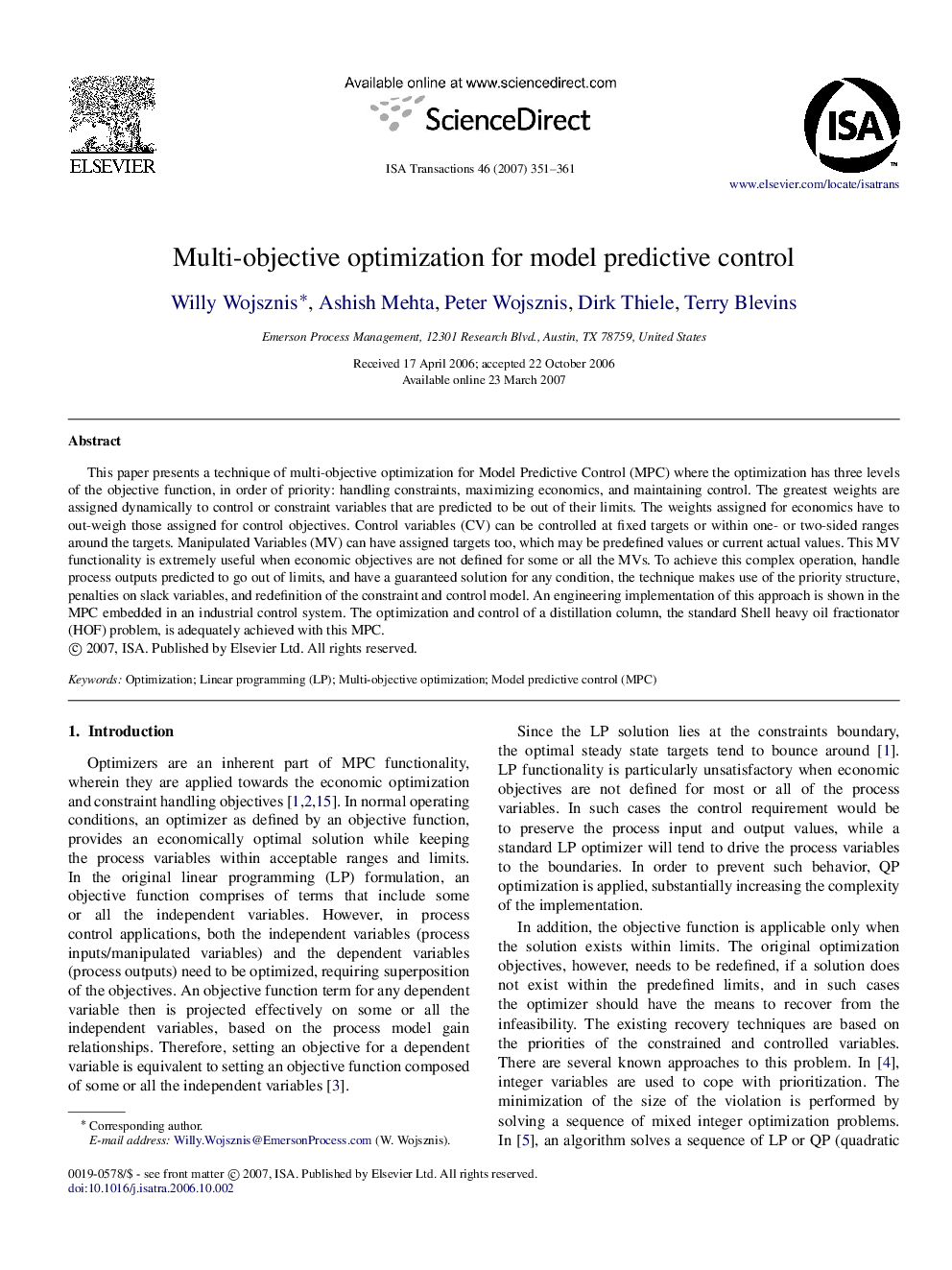| Article ID | Journal | Published Year | Pages | File Type |
|---|---|---|---|---|
| 5005411 | ISA Transactions | 2007 | 11 Pages |
Abstract
This paper presents a technique of multi-objective optimization for Model Predictive Control (MPC) where the optimization has three levels of the objective function, in order of priority: handling constraints, maximizing economics, and maintaining control. The greatest weights are assigned dynamically to control or constraint variables that are predicted to be out of their limits. The weights assigned for economics have to out-weigh those assigned for control objectives. Control variables (CV) can be controlled at fixed targets or within one- or two-sided ranges around the targets. Manipulated Variables (MV) can have assigned targets too, which may be predefined values or current actual values. This MV functionality is extremely useful when economic objectives are not defined for some or all the MVs. To achieve this complex operation, handle process outputs predicted to go out of limits, and have a guaranteed solution for any condition, the technique makes use of the priority structure, penalties on slack variables, and redefinition of the constraint and control model. An engineering implementation of this approach is shown in the MPC embedded in an industrial control system. The optimization and control of a distillation column, the standard Shell heavy oil fractionator (HOF) problem, is adequately achieved with this MPC.
Keywords
Related Topics
Physical Sciences and Engineering
Engineering
Control and Systems Engineering
Authors
Willy Wojsznis, Ashish Mehta, Peter Wojsznis, Dirk Thiele, Terry Blevins,
